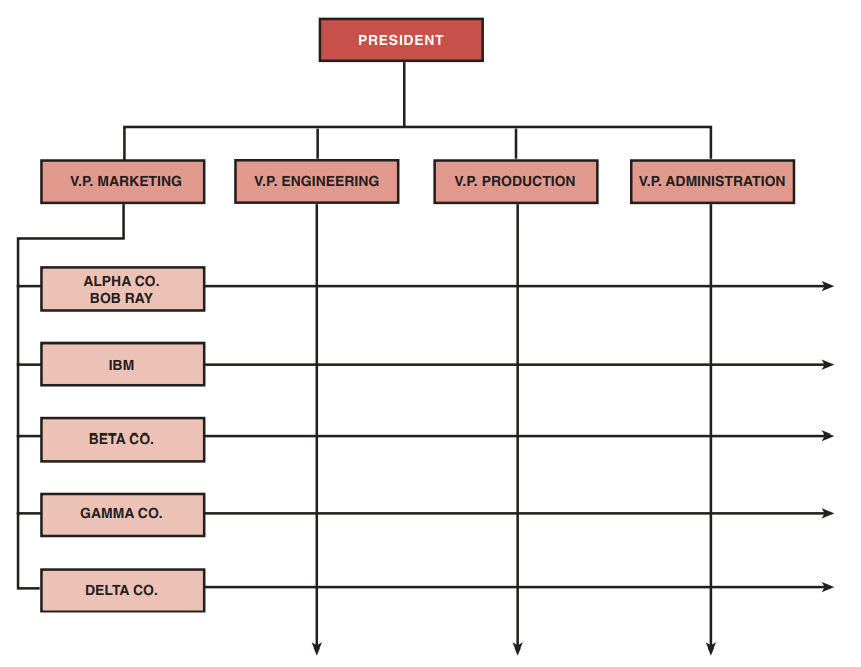Organizational redesign is occurring at a rapid rate because of shorter product life cycles, rapidly changing environments, accelerated development of sophisticated information systems, and increased marketplace competitiveness. Because of these factors, more companies are considering project management organizations as a solution.
Why have some companies been able to implement this change in a short period of time while other companies require years? The answer is that successful implementation requires good transitional management.
Transitional management is the art and science of managing the conversion period from one organizational design to another. Transitional management necessitates an understanding of the new goals, objectives, roles, expectations, and employees’ fears.
A survey was conducted of executives, managers, and employees in thirty-eight companies that had implemented matrix management. Almost all executives felt that the greatest success could be achieved through proper training and education, both during and after transition. In addition to training, executives stated that the following fifteen challenges must be accounted for during transition:
● Transfer of power. Some line managers will find it extremely difficult to accept someone else managing their projects, whereas some project managers will find it difficult to give orders to workers who belong to someone else.
● Trust. The secret to a successful transition without formal executive authority will be trust between line managers, between project managers, and between project and line managers. It takes time for trust to develop. Senior management should encourage it throughout the transition life cycle.
● Policies and procedures. The establishment of well-accepted policies and procedures is a slow and tedious process. Trying to establish rigid policies and procedures at project initiation will lead to difficulties.
● Hierarchical consideration. During transition, every attempt should be made to minimize hierarchical considerations that could affect successful organizational maturity.
● Priority scheduling. Priorities should be established only when needed, not on a continual basis. If priority shifting is continual, confusion and disenchantment will occur.
● Personnel problems. During transition there will be personnel problems brought on by moving to new locations, status changes, and new informal organizations. These problems should be addressed on a continual basis.
● Communications. During transition, new channels of communications should be built but not at the expense of old ones. Transition phases should show employees that communication can be multidirectional, for example, a project manager talking directly to functional employees.
● Project manager acceptance. Resistance to the project manager position can be controlled through proper training. People tend to resist what they do not understand.
● Competition. Although some competition is healthy within an organization, it can be detrimental during transition. Competition should not be encouraged at the expense of the total organization.
● Tools. It is common practice for each line organization to establish its own tools and techniques. During transition, no attempt should be made to force the line organizations to depart from their current practices. Rather, it is better for the project managers to develop tools and techniques that can be integrated with those in the functional groups.
● Contradicting demands. During transition and after maturity, contradicting demands will be a way of life. When they first occur during transition, they should be handled in a “working atmosphere” rather than a crisis mode.
● Reporting. If any type of standardization is to be developed, it should be for project status reporting, regardless of the size of the project.
● Teamwork. Systematic planning with strong functional input will produce teamwork. Using planning groups during transition will not obtain the necessary functional and project commitments.
● Theory X–Theory Y. During transition, functional employees may soon find themselves managed under either Theory X or Theory Y approaches. People must realize (through training) that this is a way of life in project management, especially during crises.
● Over management costs. A mistake often made by executives is thinking that projects can be managed with fewer resources. This usually leads to disaster because undermanagement costs may be an order of magnitude greater than over management costs.
Transition to a project-driven matrix organization is not easy. Managers and professionals contemplating such a move should know:
● Proper planning and organization of the transition on a life-cycle basis will facilitate a successful change.
● Training of the executives, line managers, and employees in project management knowledge, skills, and attitudes is critical to a successful transition and probably will shorten the transition time.
● Employee involvement and acceptance may be the single most important function during transition.
● The strongest driving force of success during transition is a demonstration of commitment to and involvement in project management by senior executives.
● Organizational behavior becomes important during transition.
● Commitments made by senior executives prior to transition must be preserved during and following transition.
● Major concessions by senior management will come slowly.
● Schedule or performance compromises are not acceptable during transition; cost overruns may be acceptable.
● Conflict among participants increases during transition.
● If project managers are willing to manage with only implied authority during transition, then the total transition time may be drastically reduced.
● It is not clear how long transition will take.
Transition from a classical or product organization to a project-driven organization is not easy. With proper understanding, training, demonstrated commitment, and patience, transition will have a good chance for success.
Source : Project management A system approach to planning, scheduling and controlling [EIGHTH EDITION] By HAROLD KERZNER, Ph.D.
